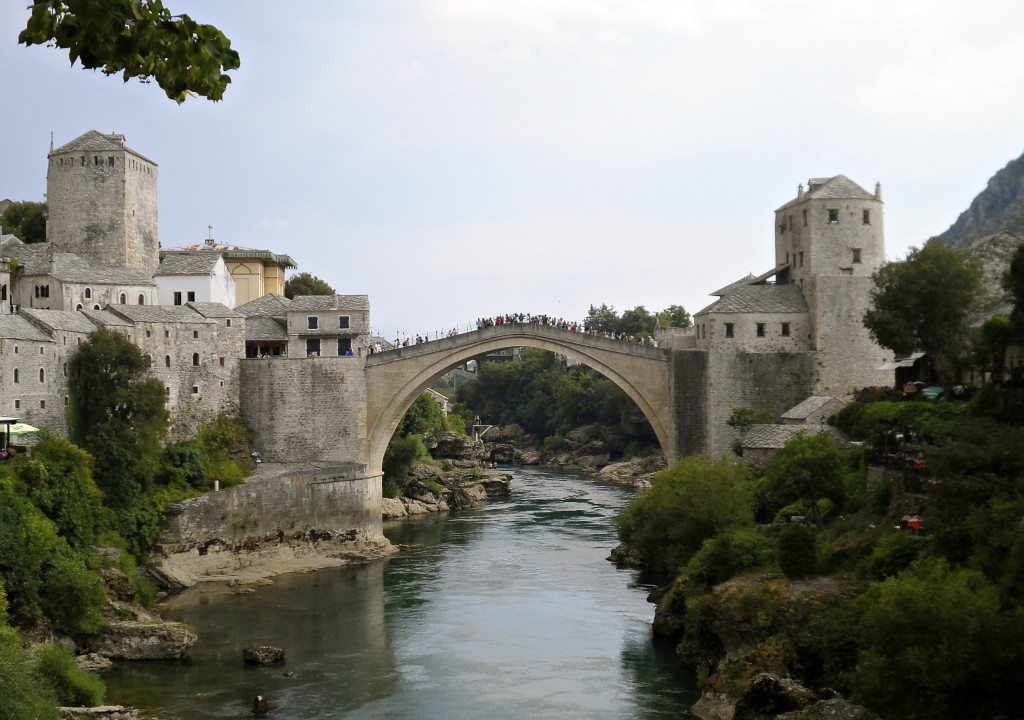
The rebuilt bridge, connecting east and west Mostar.
20 years ago, East Mostar was destroyed completely in the Yugoslavian civil war. It was called hell on earth by the journalists who witnessed it.
Now 20 years later it’s a clean and friendly town brimming with tourists from all over the world.
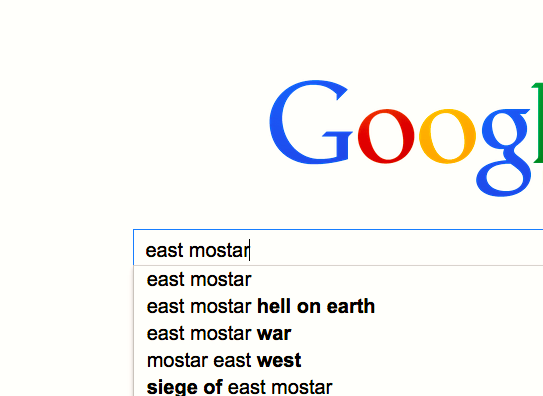
Googling east mostar.
If you google “East Mostar” then Google will suggest as the first thing that you continue with “Hell on earth”. This is very hard to see these days if you walk the streets of east Mostar as a first time visitor. The streets are nice and clean and you have shops selling the latest international fashion and trendy cafes with young hipsters. But if you look closely on some of the houses, you will see that some are riddled with bullet holes from the siege of Mostar which took places in the early 1990’s.
When East Mostar was hell on earth.
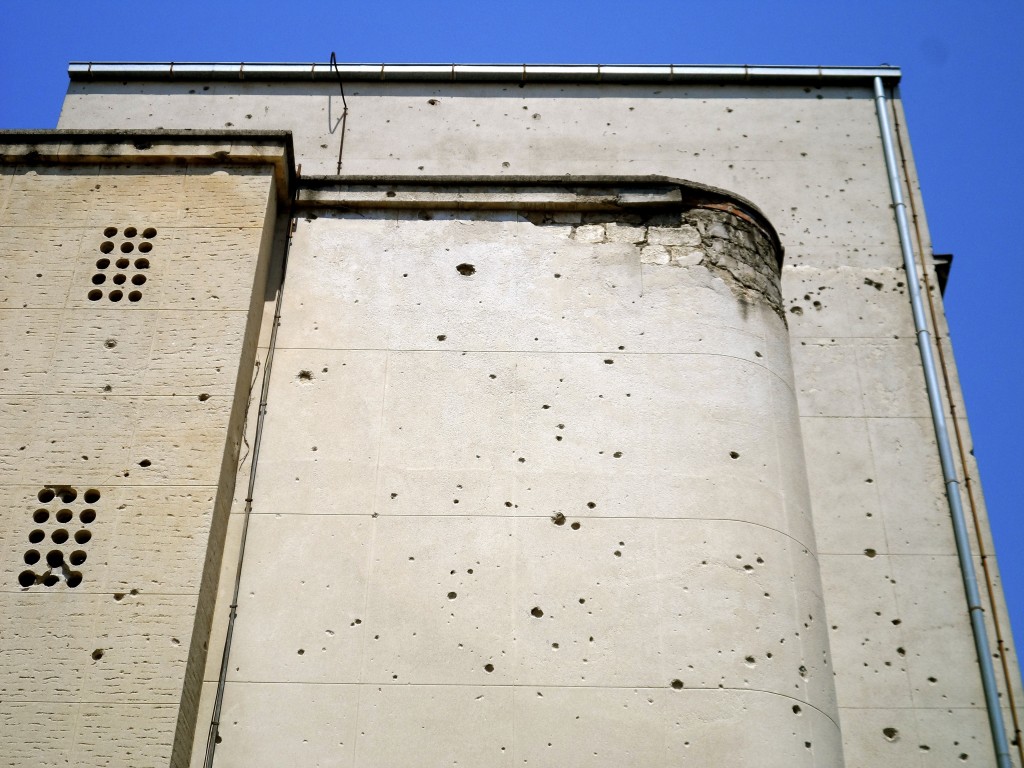
Bullet holes in a building in East Mostar.
During the civil war in former Yugoslavia fighting broke out between the two main ethnic groups in Mostar. The catholic croats in the western part of Mostar and the muslim Bosniaks in the eastern part of Mostar. The croats were getting arms from outside and from a military point much stronger than the Bosniaks, who had very little to fight back with. Many were evicted from their houses or killed. East Mostar, which is mostly muslim, was under siege for a long time. Close to 2000 were killed and many more forced to flee the town and the country. The fighting ended in 1995 after the Dayton Accord was signed and life slowly started to return to normal. While there is a little tension from time to time in the town, It’s very surprising to see how they have managed to return to living side by side again. Especially considering what happened just 20 years ago.

War cemetery.
East Mostar is wonderful these days.
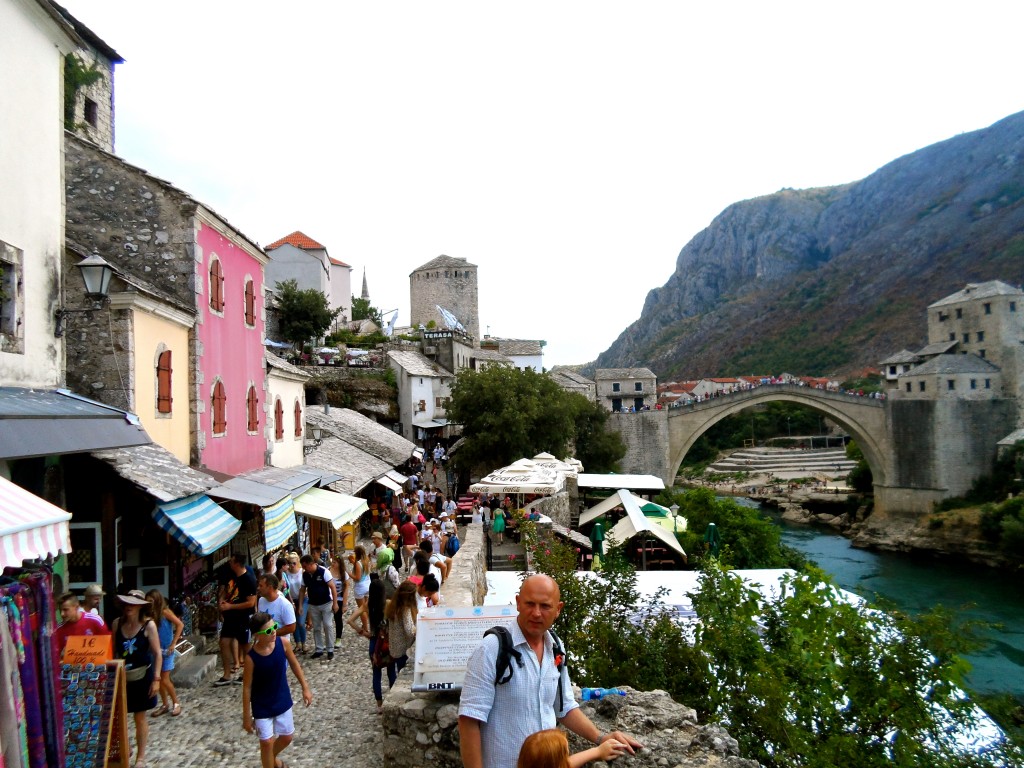
East Mostar in 2015.
Coming to Mostar I was surprised to see what a lively town it is. Especially in east Mostar which was the most heavily bombed place in Europe since the second world war. With the help of UNICEF and some other international donors, the old famous bridge has been rebuilt. The oldest houses have been restored too. The rest of the town is surprisingly nice though and it’s good to see that they have not just given up on life, but actively restored their old homes and more than 90% of the buildings in east Mostar are in a very fine condition today.
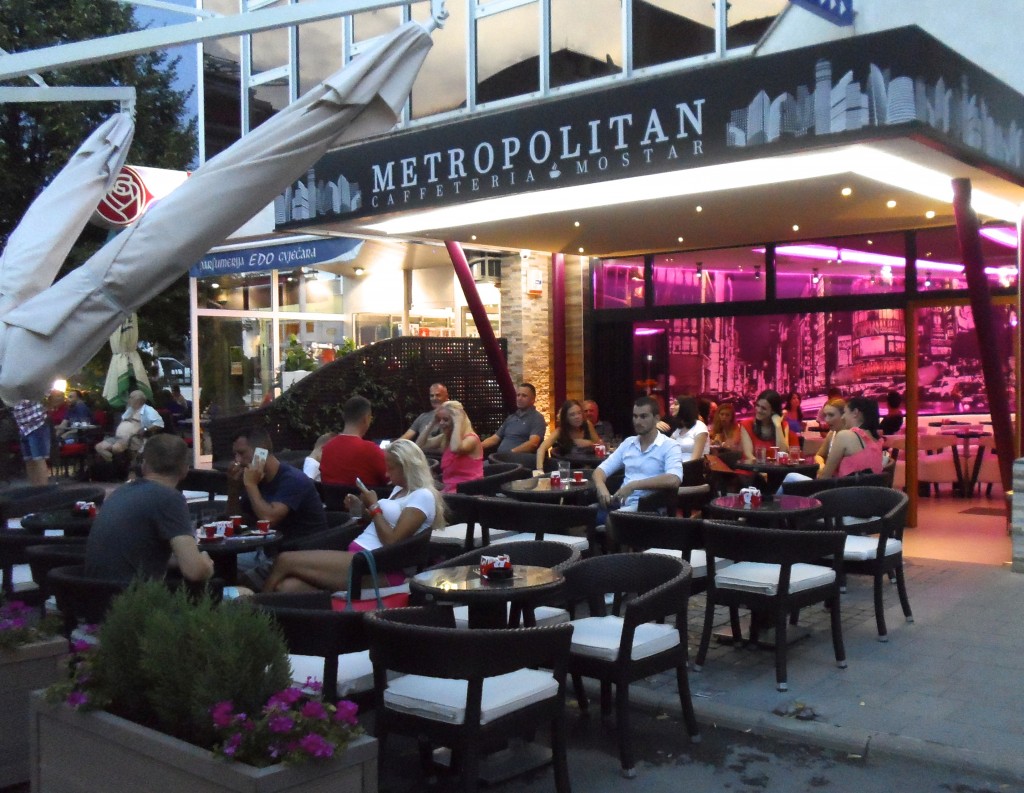
The town is dotted with nice cafes these days.
Mostar is a grim reminder of what can happen when war breaks loose and neighbours begin to kill each other. But it’s also a town which the world can learn from in terms of rebuilding a town after war. Both physically and mentally.
When I was a kid in the 1970’s, I saw a photo of the old bridge in Mostar. From that moment I always wanted to see it in real life. So it was a great shock when I saw it being destroyed in the civil war in the 1990’s. I was not sure how I would feel about going to Mostar. But going there was mostly an uplifting experience because the town has risen from the ashes in less than 20 years. I’m happy to see it prosper and I hope that many of you readers will go there too to explore the beauty of Mostar and help the local economy. So that Mostar can continue to prosper in the future and not become a place of war anymore.
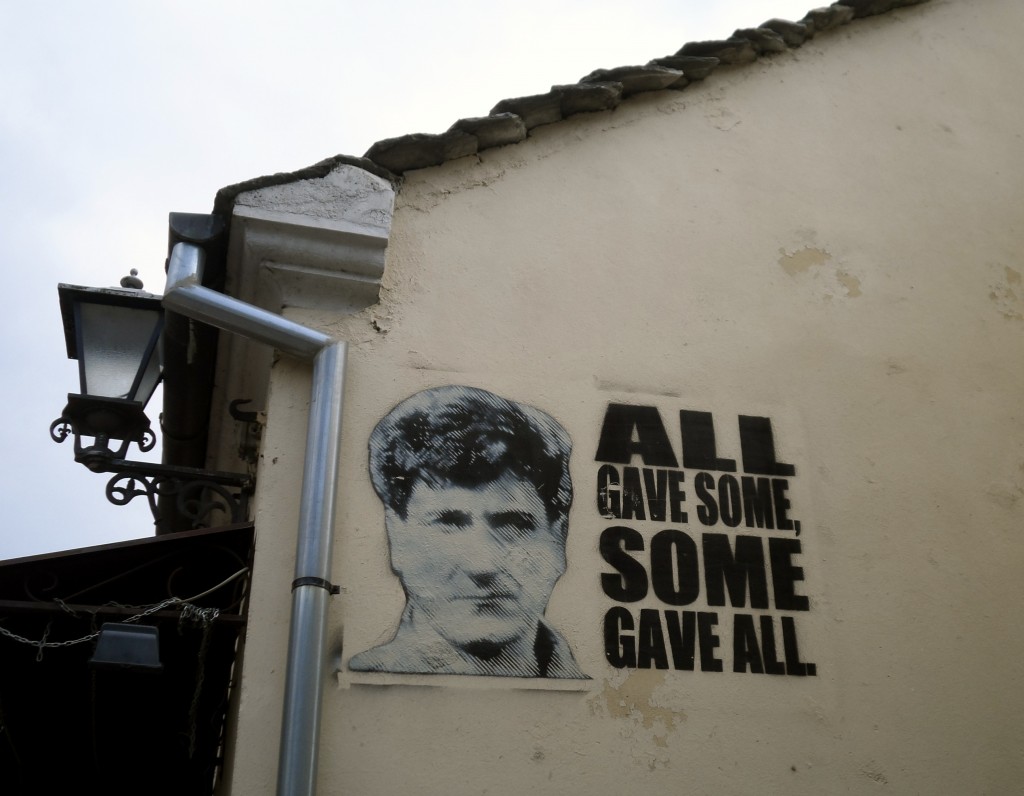
Wall painting in East Mostar.








What a fascinating place. Thanks for sharing.
Claus, I think Mostar is gorgeous, and I agree with you. It was very obvious that the not-so-long-ago war really took its toll on the people and the beautiful countryside!